Poster Abstracts
Name/Affiliation: Dainis Dravins (Lund Observatory, Sweden)
Title:
Stellar Spectroscopy during Exoplanet Transits: Dissecting fine structure across stellar surfaces
Abstract:
Stellar Spectroscopy during Exoplanet Transits: Dissecting fine structure across stellar surfaces Dainis Dravins(1), Hans-Günter Ludwig(2), Erik Dahlén(1), Hiva Pazira(1,3) (1) Lund Observatory, Box 43, SE-22100 Lund, Sweden (2) Zentrum für Astronomie der Universität Heidelberg, Landessternwarte Königstuhl, DE-69117 Heidelberg, Germany (3) Department of Astronomy, AlbaNova University Center, SE-10691 Stockholm, Sweden Differential spectroscopy during exoplanet transits permits to study small stellar surface portions that successively become hidden behind the planet. Deduced center-to-limb behavior of stellar line shapes, asymmetries and wavelength shifts will enable detailed tests of 3-dimensional hydrodynamic models of stellar atmospheres, such that are required for any precise determination of abundances or seismic properties. Such models can now be computed for widely different classes of stars (including metal-poor ones and white dwarfs), but have been feasible to test in any detail only for the Sun with its resolved surface structure. Exoplanet transits may also occur across features such as starspots, whose magnetic signatures could be retrieved from spectra of sufficient fidelity. Knowing the precise background stellar spectra, also properties of exoplanet atmospheres are better constrained: e.g., the Rossiter-McLaughlin effect becomes resolved as not only a simple change of stellar wavelengths, but as a variation of the full line profiles and their asymmetries. These studies are observationally challenging since exoplanets cover only a tiny fraction of the stellar disk. Current work with lowest-noise ESO VLT/UVES spectra demonstrates that spatially resolved stellar spectra can be reconstructed for the brightest exoplanet host stars. Ongoing exoplanet surveys will likely find other bright hosts to be observed with existing spectrometers, but forthcoming high-fidelity instruments such as PEPSI on LBT or ESPRESSO on VLT will be required to extend such studies to also fainter and rarer stellar types.




